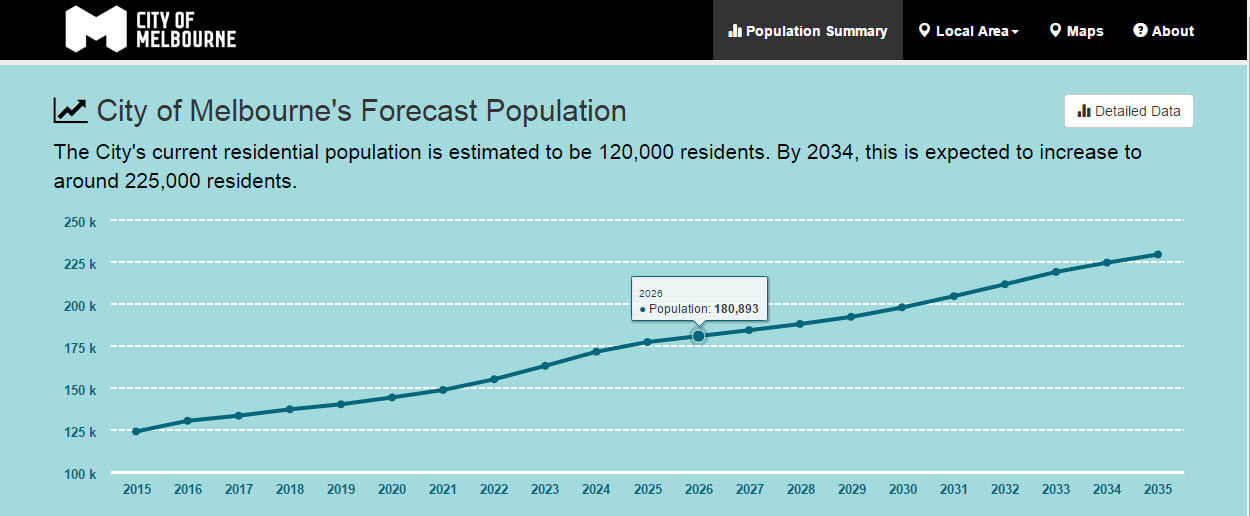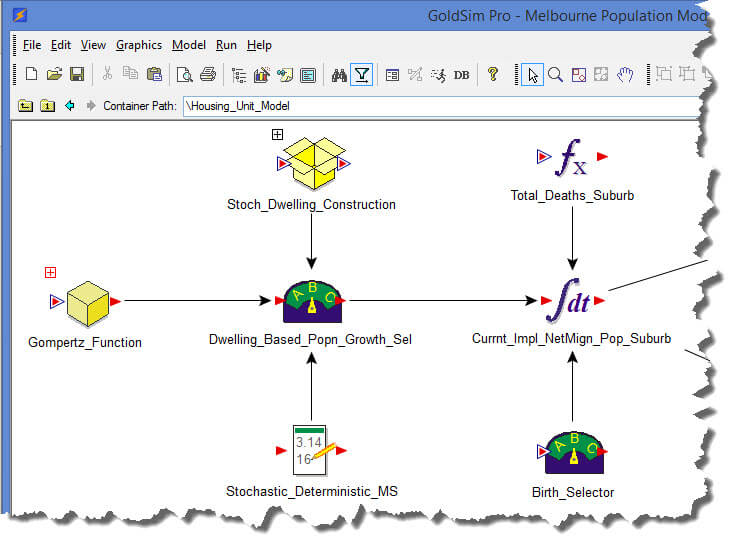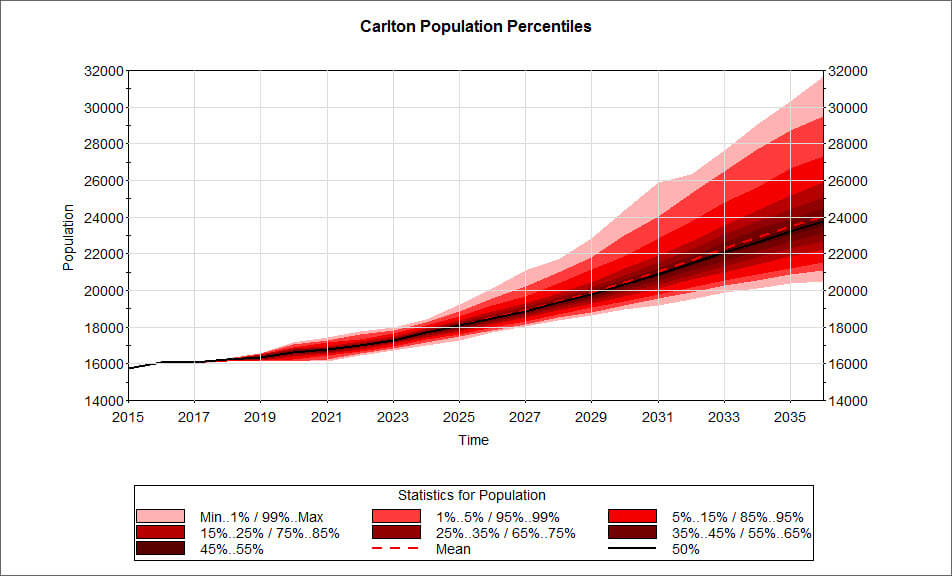Population Model Description
Purpose
The City of Melbourne, Australia commissioned Geografia to develop a 20-year population projection model that simulates the changes in population by age group, gender, and suburb throughout the City. The results of this model are used in a highly interactive website, which was also developed by Geografia.

Approach
The underlying model was built in GoldSim, which provides an ideal platform for population forecast models. In order to simulate population projections in a realistic manner, it is necessary to account for multiple uncertain factors and groups of interactive data sets. This model uses over 150 stochastic inputs to characterize uncertainty of migration, birth and death rates, dwelling construction, household size and occupancy rates. Factoring in uncertainty and propagating it through complex interactions of the model's logic is essential to understanding probabilistic future outcomes. The model uses many arrays of interacting data sets, which are organized by age, time, and place. When modeling population growth, it is critical that the model be organized visually with modules that represent the system components.
The GoldSim model relies on three statistical methods to simulate Melbourne's population projections. The three statistical methods are as follows.
1. Housing Unit Method
Future housing construction rates by dwelling type and suburb were estimated based on the City's strategic planning and using assumptions about economic conditions and future uncertainty. The resulting population projections were estimated using household size and occupancy rates by dwelling type for all future housing.

2. Cohort Component Method
The cohort component method uses an aging chain that simulates the “aging” of each group in the model. When the population of a cohort ages they will eventually graduate into the next older cohort. This is a very effective method for modeling population growth and is easily done in GoldSim. The simulation starts with the current population estimate by age, gender and location then adds new births to the first age cohort (age zero). Death rates are applied to all ages, with the rate increasing rapidly during older ages. In and out migration are also incorporated into this model for all ages and genders. Migration draws on historical trends and provides a baseline estimate of population growth. The Housing Unit Method and cohort component method are integrated to generate a final set of projections.

3. Sequential Household Propensity Method
The outputs from the two methods described above provided the input for the sequential household propensity method. This allocates individuals to different households based on historic housing conditions and assumed future changes in the City. This method draws on the work of leading Australian demographer, Dr. Tom Wilson.
Using GoldSim's Monte Carlo Simulation Capabilities
When estimating population growth, there is always a large degree of uncertainty. The model accounts for this by using GoldSim's Monte Carlo powerful simulation capabilities. Uncertain variables are represented probabilistically in the model. For example, household size for townhouses in Carlton can be one variable. Rather than a single number (e.g. 2.5 people per house), it can be represented as stochastic variable (something is this described using a probabilty distribution that is resampled over time). The model is run thousands of times in order to provide a comprehensive range of possible outcomes.
Hence, the City of Melbourne forecasts can provide ranges of possible futures that explicitily account for the uncertainty in the many inputs. Different statistics can then be viewed (e,g., mean, median, various percentiles) to provide a more complete understanding of how the City's population will grow and change.

